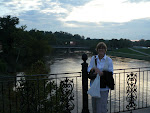The Janis Joplin song came on my husband’s satellite radio as we were driving back to
I’d be less than honest if I said that I have no reservations about going to the reunion. I skipped the 30th, after feeling kinda’ like an outsider at the  10th and 20th. My high school, at least at the height of its glory—in the 60s—was full of Golden Boys and Beauty Queens. Beautiful People. It was like practice for Ole Miss, where I went to college my freshman year. So many movers and shakers … I feel like I need to lose 30 pounds and get a book published before going to the reunion! So, the book thing isn’t going to happen. And I’ve been trying to shake this 30 pounds for 20 years. So, if I go back, I go back just like I am. In 3 months and 3 days from today. Several things have helped bolster my courage:
10th and 20th. My high school, at least at the height of its glory—in the 60s—was full of Golden Boys and Beauty Queens. Beautiful People. It was like practice for Ole Miss, where I went to college my freshman year. So many movers and shakers … I feel like I need to lose 30 pounds and get a book published before going to the reunion! So, the book thing isn’t going to happen. And I’ve been trying to shake this 30 pounds for 20 years. So, if I go back, I go back just like I am. In 3 months and 3 days from today. Several things have helped bolster my courage:
A few months ago I began to reconnect with a few classmates I hadn’t seen or communicated with in, well, 40 years. One of them, who will go unnamed because he would be embarrassed, was someone I was totally intimidated by during high school. I thought he was “too cool” to speak to me, so I would look the other way when I passed him in the halls. Turns out he’s a great guy. We’ve connected a little bit through writing, and I told him how I felt in school and he said, “We were all scared to death back then. It was just a façade… acting cool like that.”
Some folks reading this won’t believe that I felt this way, because I had lots of “honors” in school—I was Secretary of the Student Council and voted a “Favorite” in the Feature Pageant, an officer in the theater guild, business manager of the school newspaper, honors and activities that led to my being inducted into the Hall of Fame. But I was so lonely. Even with a non-stop flow of boyfriends (which I clung to in my insecurity) I never felt like I “fit in.” Thirty-something years
later I would learn some things about myself that explained some of my outsider status—my inability to connect, intimately, with people. But I still struggle to believe it wasn’t because my thighs weren’t skinny. Or my hair wasn’t perfect. Or my—fill in the blank….
So today when I picked up yesterday’s New York Times and read the Sunday Styles section’s article about Susan Boyle, “Yes, Looks Do Matter,” I wasn’t really comforted. The psychiatrists and sociologists and journalists quoted in the article pretty much gave us all a nice big hall pass—an excuse for the judgments we make about people based on their appearance. Even Boyle herself is resigned to it, saying: “There is not much you can do about it; it is the way they think; it is the way they are.”
Okay I get what the NYU psychology professor says about stereotypes being “a necessary mechanism for making sense of information,” but I don’t think we, as fallen human beings, stop at that. I think we go far beyond categorizing. I thinkwe judge. And it causes wounds that can last a lifetime. So how do we break free from those wounds? How do we quit caring what people think of us? Is Susan Boyle immune to it? She’s made a change in her looks since her appearance on
Check out the d ifference in these photos.
ifference in these photos.
While we were at the beach I read two amazing books. I’m saving one of them to review in June, just before its release. (I got an advance copy.) But I’m dying to talk about how the author also felt this pressure to perform, this hunger for applause, this people-pleasing urge. And how, even at the end, having been through an unbelievable life-changing experience, he still felt that way, to a degree. The experience helped him grow, but he wasn’t a completely different person. He left room for “discovery,” as I discussed in my last post. That’s something I’m working on in my own writing.
So, instead, I’ll talk about the other book I read at the beach, Sa me Kind of Different As Me, by Ron Hall and Denver Moore. Ron Hall was an upscale art dealer in
me Kind of Different As Me, by Ron Hall and Denver Moore. Ron Hall was an upscale art dealer in
This is Denver, with Ron Hall, the art dealer.
It got me to thinking about the slavery I’ve lived in for almost 60 years, and how maybe it’s a slavery of my own making. This caring about what other people think to the point of trying to “achieve” acceptance. But how does one break free of this?
Maybe recognizing the chains is the starting point. And that’s where I am today. Wanting to break free, but realizing that I still believe I have something to lose… which makes me a slave to things I wouldn’t want to lose. Or to things I want but don't think I can ever have.
Either way, maybe














































































































